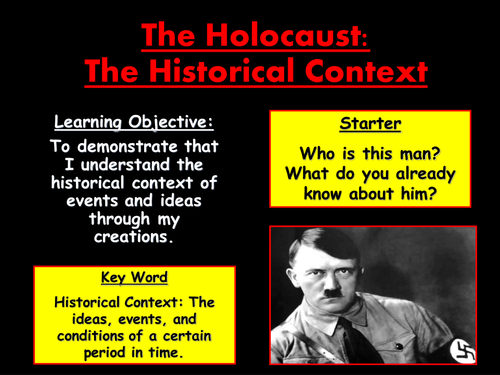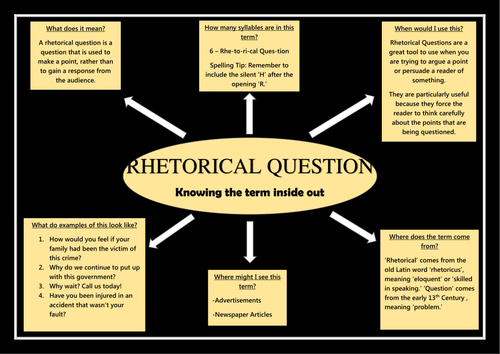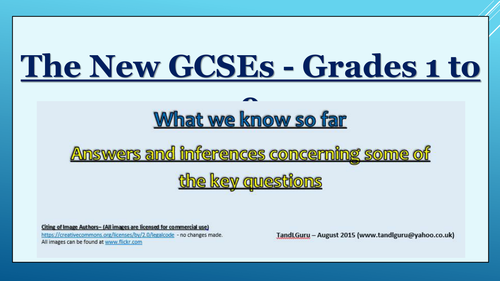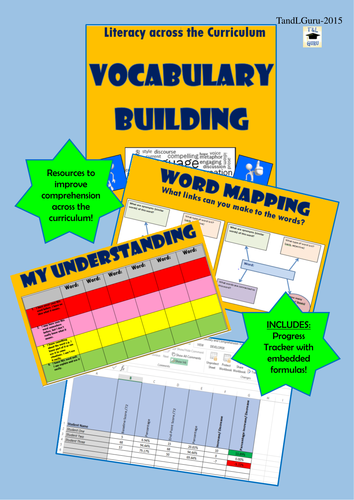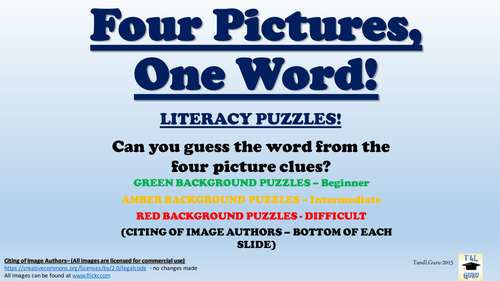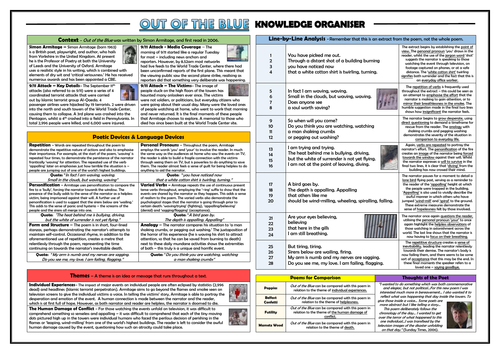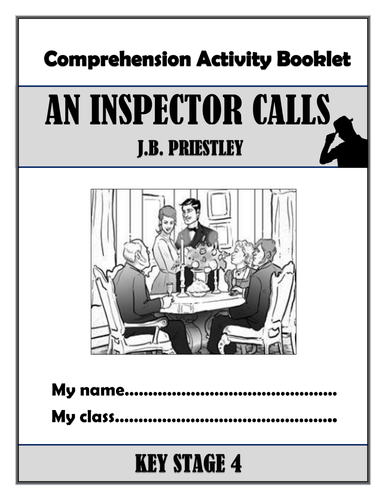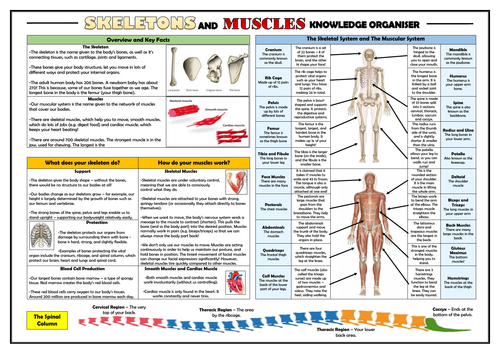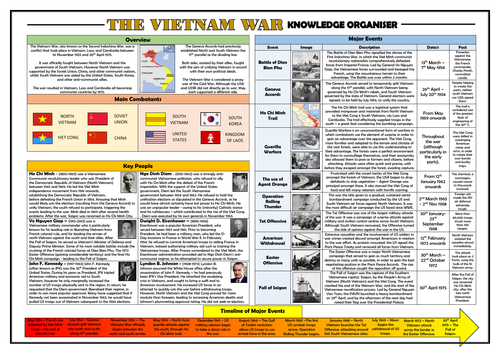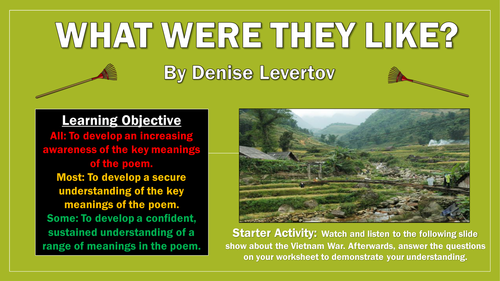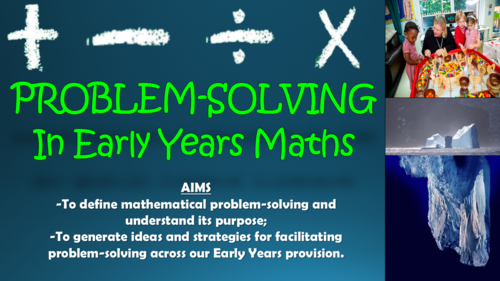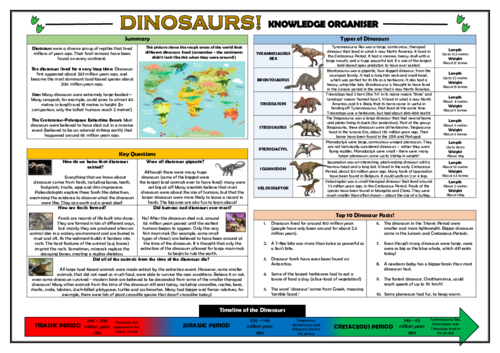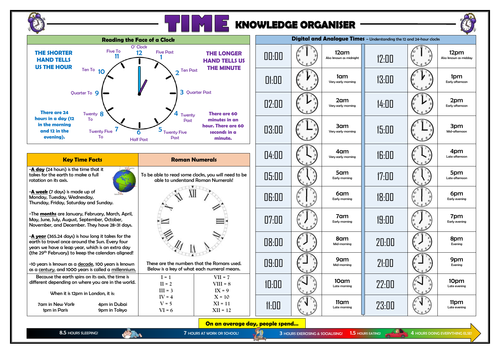
3k+Uploads
1900k+Views
2234k+Downloads
All resources

Data Analysis Headline Template and Data-Inputting Time-Saving Tool!
The data analysis headline template is a neat, compact, and visually-engaging tool for school leaders, teaching and learning leaders, curriculum leaders, or any other school-based staff responsible for the inputting and analysis of pupil progress data.
All that the resource requires is for users to input raw pupil progress data, and it will automatically calculate percentages, and create colourful pie-charts to provide detailed yet easily-readable headline figures. Each excel sheet has been designed to fit onto one A4 page, for easy reading, and this includes space for users to input analysis of the data and plot interventions.
5 sheets have been pre-populated with example data, but the user can create as many extra sheets as they want by simply right-clicking the tabs, selecting 'move or copy', and then ticking the 'create copy' box. The sheets that are created will contain all of the same formulas and pie-charts, to enable you to create page after page of detailed progress analysis!
All of the columns and row names in the tables can be edited to suit the language used by your school, but please avoid altering the percentages rows, as you may lose the formulas.
The data inputting resource provides all of those responsible for data tracking and monitoring with a valuable time-saving tool to ensure that data can be well-presented, and trends can be easily identified.
Fourteen separate sheets have been provided (one for each subject) and four tables are formulated to allow you to break down pupil progress data by any category that you require.
Simply input the total number of students taking the subject for each category, and the number making progress by each measure, and the template will automatically provide you with the percentages, and also create pie charts to show headline data visually.
A space is also provided for teachers to analyse key trends, and plot interventions.
If you have any questions after purchasing this, please do not hesitate to contact me at TandLGuru@yahoo.co.uk

The Holocaust: Schindler's List
This lesson aims to help students to write descriptively, using a range of descriptive writing techniques. Students also learn how to incorporate the five senses into their writing. Furthermore, students explore social and moral issues such as 'swimming against the tide' and 'being different,' through the story of Oskar Schindler.
Informative and engaging, this lesson follows a clear and logical learning journey. Students learn to:
- Define the key term 'humane'
- Understand the story of Oskar Schindler, and consider the social and moral dilemmas that he faced;
- Consider decisions that they have had to make which contrast to popular opinion;
- Remember the five senses, and discuss why they are important to descriptive writing;
- Use the five senses to create descriptive sentences based on scenes from Schindler's List;
- Write a descriptive piece about a difficult decision that they have had to make;
- Peer-assess each others' learning attempts.
Resources included are: A whole-lesson PowerPoint, that guides the teacher and learners throughout the entire lesson, an engaging worksheet, a writing to describe help-sheet, and a teacher guidance sheet.
Note: I'm aware that this is a 15 film - however the clips that I have selected are not amongst the most graphic, and so I feel that the lesson can be used with students younger than 15. You will need a Youtube connection for the links to work.
All images are cited at the end of the PowerPoint presentation, and are licensed for commercial use.

The Holocaust: The Historical Context
This lesson aims to help students understand the historical context of The Holocaust. It is designed to be the first in a series of lessons based upon Holocaust-themed texts, but also makes a fitting introduction to teaching texts such as The Boy in the Striped Pyjamas, Anne Frank's Diary, or simply to be used in a PSHE/form-time lesson to build awareness.
Informative and engaging, this lesson follows a clear and logical learning journey. Students learn to:
- Define key terms related to the historical context of The Holocaust;
- Remember and understand key information about the Holocaust that they learn from an engaging PowerPoint presentation;
- Consider the SMSC questions that arise from such a horrific case of genocide;
- Create a newspaper article that utilises the features of writing to inform, and shares key facts about the Holocaust;
- Peer-assess each others' learning attempts.
Included in this resource pack: A comprehensive, whole-lesson, visually engaging PowerPoint presentation, which guides the teacher and learners through the lesson, a writing to inform help-sheet, a tabloid newspaper template, ' a key terms activity, and teacher guidance notes.
All images are cited at the end of the PowerPoint presentation, and are licensed for commercial use.

Persuasive Devices - Knowing the Words Inside Out! (Helpsheets, Poster, and Worksheet Templates)
These colourful, engaging and informative posters/ help-sheets are perfect to help your students gain a broad and deep understanding of each of the key persuasive devices, thus vastly improving their textual analysis and enhancing their persuasive/argumentative writing attempts.
Each sheet displays the key word in the middle, and then answers some of the key questions surrounding the words, including:
- What does it mean?
- How many syllables does it have?
- What are examples of it?
- How do I spell it?
- When would I use this?
- What type of word is it?
- Where does the word come from?
There are sheets for: Statistics, Personal Pronouns, Anecdotes, Rhetorical Questions, Repetition, Colloquial Language, Connectives, List of Three, Imperatives, Emotive Language. These can be used as help-sheets as students write (my students love this) or blown up to A3 to use as classroom posters.
I have also provided blank templates for each word, so that students can fill in the everything that they know about the words themselves, which makes for an excellent starter, plenary, or recap activity.

New GCSEs Grades 1-9 - Answers to the Key Questions.
I have used this resource to explain the new GCSE changes to other staff, governors, and parents. Feedback has been that it is clear, concise, and answers some of the key questions. In the document, I have addressed:
- What changes have already taken place?
- When do the changes take place?
- How do the new grades equate to the old grades?
- Why are the changes necessary?
- What are the changes to the English GCSE?
- What are the changes to the Maths GCSE?
- How will school performance now be judged?
Also attached is a visual representation of how the new GCSE grades map onto the old GCSE grades. Within the PowerPoint are a number of links to key information provided by the DfE and OFQUAL. Hope this helps!

Jargon Hunt - KS2 Maths - Building Literacy through Riddles and Teamwork!
Welcome to Jargon Hunt! This engaging and exciting activity is perfect for building students' literacy skills; helping them to understand key Maths vocabulary through cryptic rhyming riddles and teamwork.
Once the game is introduced and the rules are shared (on the presentation) students are given a riddle card and an answer card. The only catch is that their answer card does not match their riddle! Through reading their riddle to others, and allowing others to read their riddles to them, students learn the Maths vocabulary as prescribed for teaching at KS2 in the new National Curriculum.
Provided in this pack are:
- 30+ slide presentation, hosted by David Dictionary-son, who walks students through the game in a step-by-step fashion.
-Class-size pack of riddle cards and answer cards. They simply need to printed on card, or printed on paper and laminated.
This resource is a valuable tool for helping students to comprehend the words that they will need to understand in the New Curriculum, build valuable speaking and listening skills, and also have lots of fun!
This resource can be bought alone. or as a part of a Jargon Hunt KS2 bundle (English, Maths, and Science) for just £1 more!

Vocabulary and Comprehension Building - Complete Approach and Tracker
This is a highly-effective tool for implementing a vocabulary and comprehension element to school-wide 'literacy across the curriculum' initiatives. Not only does it encourage students and teachers to focus upon fully understanding key words in each of their subjects, but it provides the school with a clear and concise measuring device for gauging students' vocabulary and comprehension improvements.
Students first sit the baseline test in each subject - a booklet that tests their complete knowledge of whichever subject-specific terms they need to learn in the next assessment period. Examples of the tasks they are asked to complete are:
- Spelling the word;
- Defining the word;
- Giving an example of the word in a sentence;
- Self-evaluating their understanding of the word;
- Selecting what type of word it is;
- Thinking of synonyms for the word, and more.
They are given a score for their performance in the tasks.
Upon completion of the teaching unit, students complete the 'End-Point' booklet, completing the same tasks. The two scores (from the baseline and the end-point) are recorded into the tracker document, (10 sheets are provided for different departments) which automatically calculates baseline and end-point percentages, and percentage increase or decrease. It also colour codes red or green dependent upon student performance. This gives the user a clear measure of the effectiveness of the literacy scheme across the school - perfect for performance management, reporting to OFSTED, and school improvement.

Four Pictures, One Word!
This is a great resource for lesson starters, building literacy across the curriculum, plenaries, or simply for fun. Based upon the popular mobile app, this visually engaging activity is highly effective at promoting engagement and getting students thinking about words - many of whom seem to love playing the game on their phones! It is particularly useful for Literacy practitioners who are looking to expand students' vocabularies and/or raise the subject of homonyms.
There are a range of challenges:
Green = Beginner level
Amber= Intermediate level
Red = Expert level
The document is easily editable, so you can also add in your own pictures and challenges. Also, all of the pictures used are licensed for commercial use, and all authors are cited.

Teaching and Learning Performance Grids
This resource pack is comprised of:
1.) Observation & Learning Walk Performance Grid
2.) Marking and Feedback Performance Grid
For use alongside lesson observations, learning walks, and book monitoring, these succinct performance grids enable observers to gauge, categorise, and feedback on teaching and learning sessions using OFSTED guidance for effective teaching. The documents provide descriptors of 'outstanding', 'good', 'requires improvement' and 'inadequate' practice within appropriately considered teaching and learning focus areas, for example: Questioning, Positive Feedback, Use of Additional Adults, etc. Schools who still grade individual teachers have noted that these are helpful aids in arriving at an overall judgement.

Out of the Blue - Poem Knowledge Organiser/ Revision Mat!
This detailed and visually-appealing resource offers a complete reference point for students learning or revising Simon Armitage’s 9/11 poem Out of the Blue.’ It contains comprehensive sections on:
Context;
Line-by-line analysis (with quotes);
Poetic Devices/ Language Devices;
Themes;
Form/Structure;
Poems for Comparison;
Thoughts of the Poet.
Key words and ideas are underlined for easy reference. The resource is designed to be printed onto A3, and is provided as both a PDF and a Word version (so that you can edit if you want to). All images used are licensed for commercial use and are cited on a separate document (included).

Writing Playscripts: Interesting Subject Matter!
This stimulating and thought-provoking lesson enables students to create playscript texts containing appropriate and imaginative content choices, using knowledge of genre and narrative structure to form engaging subject matter. In particular, students learn how key features such as the setup, confrontation, and resolution, in addition to characters (such as heroes and villains) can aid the creation of original and engaging playscripts.
The lesson follows a clear, logical, bite-size learning journey, which guides students towards differentiated learning objectives. Over the course of this journey, they become able to:
- Define and exemplify the different genres of playscripts;
- Research and identify the key features of different genres;
- Gaining an in-depth understanding of the narrative structure of playscripts;
- Applying this understanding to popular playscripts, and then using this information to create their own playscripts;
- Write their own playscripts, with interesting, varied, and appropriate subject matter;
- Self/peer assess their playscript attempts.
This resource pack includes:
- A visually engaging whole-lesson PowerPoint presentation;
- A helpful and well-structured research template;
- A comprehensive planning sheet for designing their own playscripts;
- A detailed lesson plan, complete with what the teacher and students should aim to achieve at each stage of the lesson.
All images are licensed for commercial use, and are cited on the final slide of the PowerPoint.

Writing Mystery Narratives - Upper KS2 Knowledge Organiser!
This clear, detailed and visually-appealing resource offers a complete reference point for year 5/6 children when writing mystery narratives. The organiser is also perfect for teachers, parents and English subject leaders - aiding their planning and supporting of children’s knowledge development for this writing text type.
The organiser has a particular focus on the content, language and structural features required to write effective mystery stories at upper KS2. It contains distinct sections covering:
-Fantasy Overview;
-Content: Settings, Characters, and Quests/Mysteries;
-Language: Descriptive Devices, Dialogue, Conjunctions, Punctuation Checklist and Word Mat;
-Structure - Titles, Structure Mountains and other tips;
-Key Vocabulary
The content is fully aligned with the age-related expectations for upper KS2 children in writing. The resource is designed to be printed onto A3, and is provided as both a PDF and a Word version (so that you can edit if you want to). All images used are licensed for commercial use and are cited on a separate document (included).

An Inspector Calls Comprehension Activities Booklet!
This resource booklet contains a wide range of age-appropriate, engaging, and meaningful comprehension activities for use throughout the reading of J.B. Priestley's 'An Inspector Calls.' Teachers have found them particularly useful in exam revision, comprehension tasks, or guided reading sessions. They are perfect for aiding the progress of students towards meeting the KS4 expectations within the new National Curriculum framework - this makes the tasks suitable for all examining bodies. Students have found these resources extremely engaging, and for teachers there is explicit information within each task regarding which comprehension strands the task is designed to demonstrate. They also relate to key extracts, characters, and themes from the story, ensuring that students gain a deep understanding of the text.
Activities within the booklet include:
- 'Context: Pre-War Britain' - to aid students with 'Drawing on knowledge of the purpose, audience and context of the writing, including its social, historical and cultural context and the literary tradition to which it belongs, to inform evaluation;'
- 'Priestley's Description' - to aid students with 'Analysing a writer’s choice of vocabulary, form, grammatical and structural features, and evaluating their effectiveness and impact;'
- 'The Inspector' - to aid students with 'Seeking evidence in the text to support a point of view, including justifying inferences with evidence;'
- 'Editing the Play' - to aid students with 'Making an informed personal response, recognising that other responses to a text are possible and evaluating these.'
Plus many, many more activities (the booklet is around 30 pages in length!) I've also added it as a PDF in case the formatting differs on your computer.
All images are licensed for commercial use, and are cited on a separate document (included).

KS2 Skeletons and Muscles Knowledge Organiser!
This clear, detailed and visually-appealing resource offers a complete reference point for KS2 students learning or revising knowledge relating to skeletons and muscles. It contains comprehensive sections on:
The skeletal and muscular systems - complete with annotated diagrams and explanations of key bones/ muscles;
Overview of bones and muscles, including key facts;
Functions of the skeleton - support, protection, and the production of red blood cells;
How muscles work - voluntary and involuntary muscles;
Annotated diagram of the regions of the spinal column.
The resource is designed to be printed onto A3, and is provided as both a PDF and a Word version (so that you can edit if you want to). All images used are licensed for commercial use and are cited on a separate document (included).

Vietnam War - Knowledge Organiser/ Revision Mat!
This detailed and visually-appealing resource offers a complete reference point for students learning or revising knowledge of The Vietnam War. It contains comprehensive sections on:
Overview and map;
Events - dates, images, descriptions, and key facts;
Key People - Ho Chi Minh, Ngo Dinh Diem,Vo Nguyen Giap, Dwight D. Eisenhower, John F. Kennedy, Lyndon B. Johnson;
Main Participating Countries;
Timeline of Major Events.
Key words and ideas are underlined for easy reference. The resource is designed to be printed onto A3, and is provided as both a PDF and a Word version (so that you can edit if you want to). All images used are licensed for commercial use and are cited on a separate document (included).

What Were They Like? Denise Levertov - Vietnam War Poem
These resources enable students to build their knowledge of the content, language, and structure of Denise Levertov’s Vietnam War poem ‘What Were They Like?’ In particular, students learn about the historical context of the Vietnam War. They also learn how features of language and structure aid the impact of the poem.
Students learn through a logical and step-by-step learning journey, including:
-Exploring the historical concept of the Vietnam War;
-Understanding key information about Denise Levertov and her life;
-Reading and interpreting the poem;
-Understanding the poem, with a particular emphasis upon the content, language, and structural features;
-Writing an extended analysis piece based upon how Levertov gets across her feelings about war in the poem, through the use of language and structure;
-Peer assessing each other's learning attempts.
Included is:
- Whole lesson PowerPoint - colourful and substantial; (including hyperlink to a reading of the poem)
- Copy of poem;
- Structural devices worksheet
- Analysis template with in-built success criteria for creating well-structured responses;
- Comprehensive lesson plan.
There are also opportunities for group learning, peer assessment, and whole class discussion. This was originally taught to middle-ability year 9/10 groups, but can easily be differentiated for groups of different ages and abilities.
All images are licensed for commercial use, and image rights are listed on the last page of the presentation.

Problem Solving in Early Years Maths CPD Session!
This informative session offers Early Years practitioners a more in-depth understanding of how to employ problem-solving activities effectively in their classrooms. It is intended to be used in a short, introductory, information-sharing CPD environment, and took me about 45 minutes to deliver. The session is rooted in findings from educational research (links included) and goes through:
Exactly what constitutes problem-solving, and why it is so essential in the broader context of maths education;
Key ingredients for ensuring that problem-solving tasks are engaging and effective;
Some excellent model examples of problem-solving activities;
How to incorporate ‘incidental problem-solving’ into classrooms;
Useful links for resources and task ideas, and further reading.
I hope that you find it useful!

Dinosaurs Knowledge Organiser/ Revision Mat!
This clear, detailed and visually-appealing resource offers a complete reference point for students learning or revising knowledge relating to the dinosaurs. It contains comprehensive sections on:
Overview - the who, what, when, where of dinosaurs;
Types of Dinosaurs - including Tyrannosaurus Rex, Triceratops, Stegosaurus and Brontosaurus, amongst others;
Key Questions about Dinosaurs - including ‘How do we know dinosaurs existed? and How are fossils formed?’ and more;
Dinosaur Timeline - including details about the Triassic, Jurassic and Cretaceous Periods;
Top Ten Dinosaur Facts!
The resource is designed to be printed onto A3, and is provided as both a PDF and a Word version (so that you can edit if you want to). All images used are licensed for commercial use and are cited on a separate document (included).
The resource could be adapted for a variety of ages and abilities, but I originally used this with Key Stage 2 children.

Macbeth 'Pointloss' Game!
This exciting ‘Pointloss’ game is perfect for use as a whole lesson resource, enrichment option, or revision tool. Editable, so that you can change to any other topic or change questions. (I’ve also added a blank template so that you can make your own games from scratch). Containing almost 30 slides of sound clips, interesting tasks, and suitably challenging questions, this resource is effective at both promoting engagement and enhancing learning. There are several full rounds of questions to build or revisit knowledge of characters, plot, and themes in ‘Macbeth.’
Round 1. The characters in Macbeth
Round 2. Quotations from the text
Round 3. Settings and Themes
Round 4. Deaths in Macbeth
The nature of this game ensures that the resource can challenge students of all levels.
A blank template has also been added, so that you can create your own games!

Time Knowledge Organiser/ Revision Mat!
This clear, detailed and visually-appealing resource offers a complete reference point for students learning or revising knowledge relating to understanding time. It contains comprehensive sections on:
Reading the Face of a Clock - including understanding the minute and hour hands;
Key Time Facts - understanding the duration of days, weeks, months, years, etc;
Roman Numerals - to aid children in telling the time on old-fashioned clocks;
Digital and Analogue Times - looking at different ways to express the time using the 12 and 24 hour clocks, using both digital and analogue clocks;
Average Time Spent in a Day Timeline
The resource is designed to be printed onto A3, and is provided as both a PDF and a Word version (so that you can edit if you want to). All images used are licensed for commercial use and are cited on a separate document (included).
The resource could be adapted for a variety of ages and abilities, but I originally used this with Key Stage 2 children.



